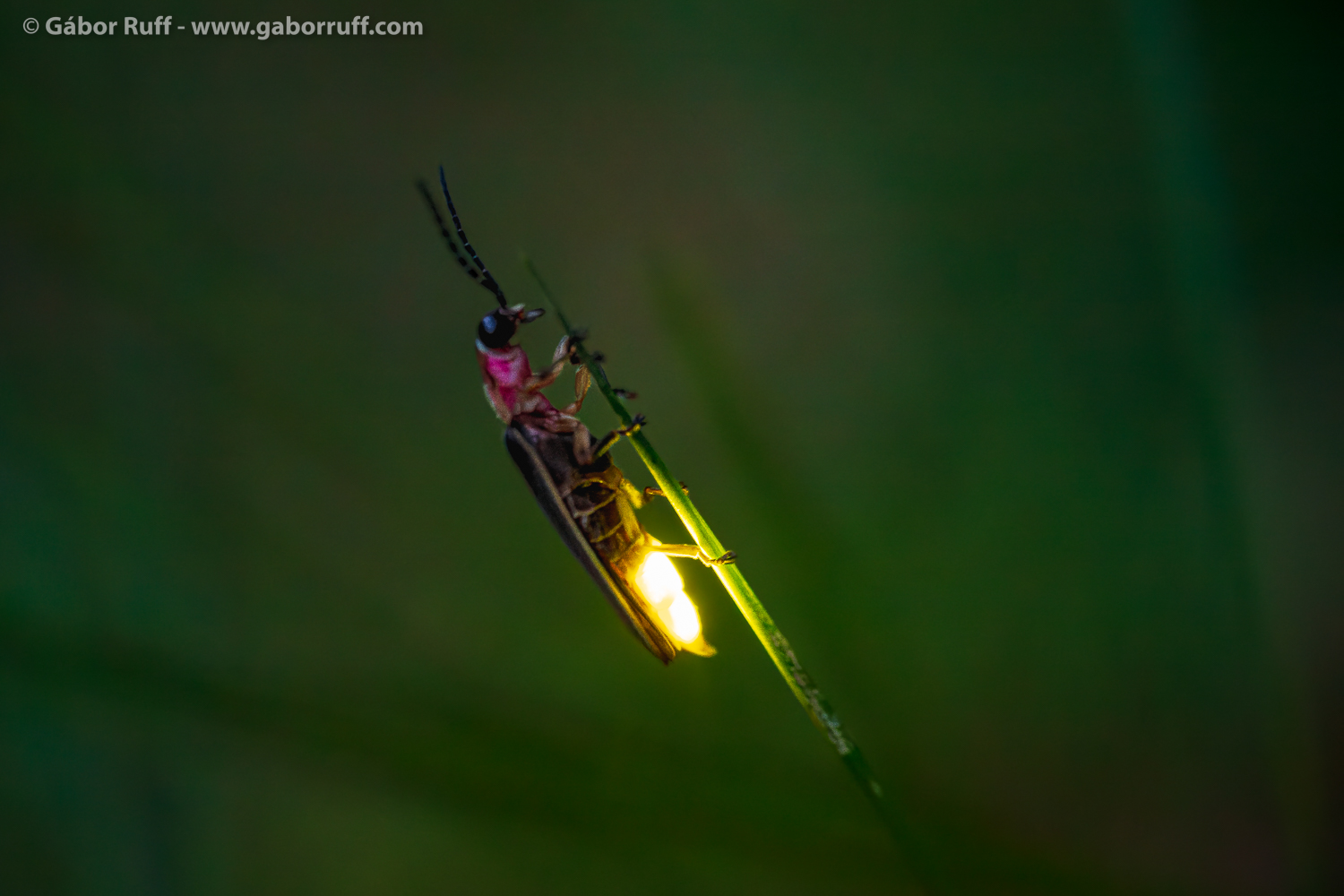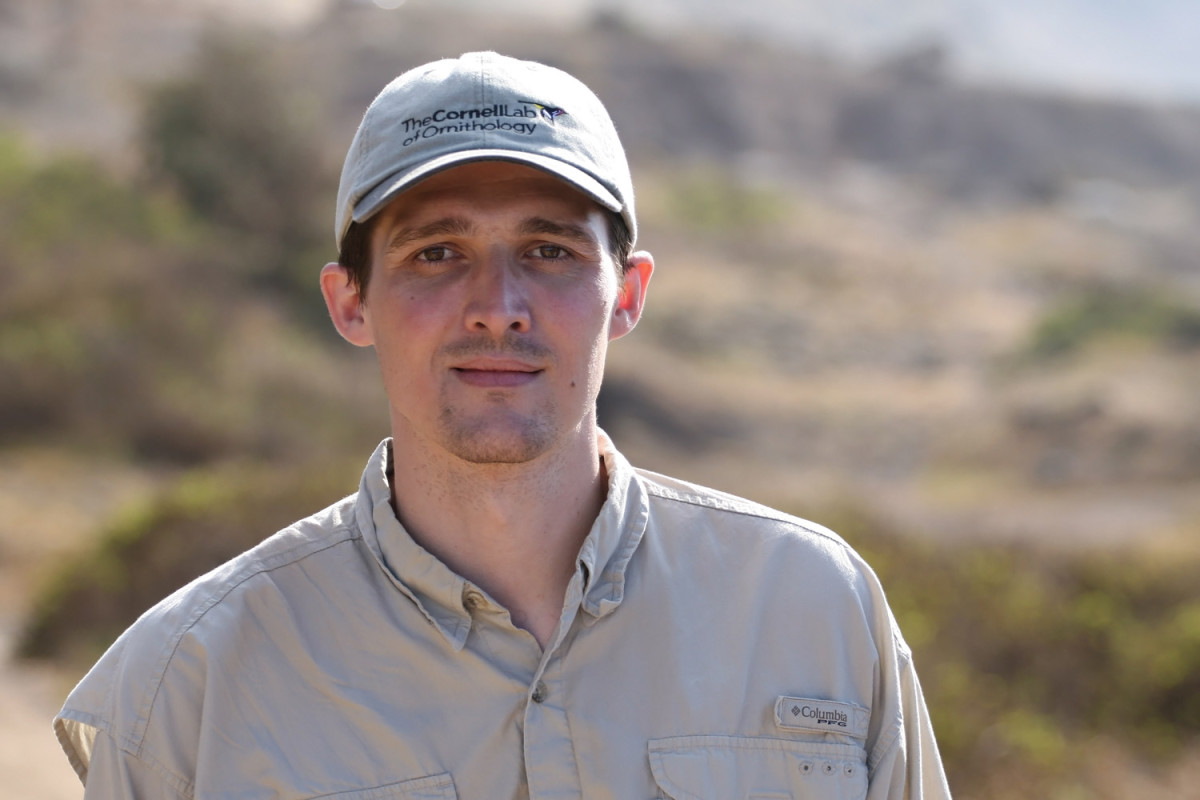The middle of summer is “firefly season” in Connecticut and in many parts of North America. When the sun goes down the forests and meadows light up as myriads of tiny light-producing insects make a magical show for a few hours. They are called fireflies, glow-worms or lightning bugs, however, they are neither flies, worms or true bugs, they are beetles. There are about 150 firefly species in North America, the most widespread in Connecticut is the common eastern firefly (Photinus pyralis). It is also called big dipper firefly, because of the males’ swooping J-curve flight. They flash in every few seconds while flying to attract attention. Females remain stationery on low vegetation and they signal back to the males using a single blink, therefore this lighting show is actually the courtship displays of the fireflies. I watched this magnificent performance in my backyard for a while and decided to capture it. I wanted to show at least a half-an-hour firefly activity in one image. I put my Canon EOS 5Ds camera on a tripod, found a composition and started taking photos at dusk when it was dark enough to show the lights of the fireflies. I set my shutter speed to 30 seconds and took about 50 photos in a 30-minute range and stacked them into one image in Photoshop.

After processing the first image, I got excited and wanted to document the whole phenomenon, so I spent almost every night among these wonderful creatures in the last three weeks. I wanted to make more long exposure images in a different part of my backyard and in the forest behind our house. I used the same technique for these images that I explained before, but for longer periods, usually an hour or so. I also wanted to take close-up images of the beetles. I don’t really do macro photography anymore, but fortunately I still have my old EF-S 60mm macro lens. It’s an APS-C lens, but with a 12mm extension tube, it’s usable on my full frame cameras as well. There’s a little vignetting in the corners, but it’s no big deal on these kinds of dark images. For these photos I had to use ISO 6400 which is normally way too high for my “oldish” high megapixel cameras, but recent softwares like DXO Pure Raw make these high ISO images usable.

When I got the close-up images I had imagined, I got very eager to capture a male firefly during its flight too. I had been watching these insects for a few days and read a lot about their behavior, so I had an idea how to do that. I decided to use a wide-angle lens so it would be easier to aim and “catch” a firefly in the frame. I set the aperture to f/16 to increase depth-of-field, so there’s a greater chance a firefly will be in focus. I used my flash and set the flash power to 1/64 to “freeze” the fireflies in flight. I put a small softbox on the flash to diffuse the harsh flashlight. I also wanted to show some movement so I used a relatively long 1/30 second shutter speed and synchronized the flash to the second curtain. ISO was set to 6400 again and I used continuous shooting. Obviously I couldn’t use autofocus, so I set my lens to the closest focusing distance, which is about 280mm (11 inches) and tried to follow a flying beetle from that distance and shot a few short series hoping to get everything right and capture the insect in flight while glowing. It was a great exercise and sometimes I got lucky too.

During the numerous photoshoots, I got every photos I wanted, including a picture of a mating firefly couple and even a shot of an unlucky beetle that got caught by a spider. The last few weeks were fun and I felt fortunate to witness and photograph such an incredible event in nature. But how do fireflies light up? Well, their light production is called bioluminescence. It’s a chemical reaction inside their bodies. They have two light-producing organs on the abdomen. The light-producing enzyme is luciferase which requires oxygen, luciferin and ATP to catalyze the chemical reaction that produces photons of yellow-green light. A firefly controls the reaction by adding oxygen to the other chemicals. Fireflies are truly amazing creatures, however, their life is not all light and glory. Their populations are declining worldwide as humans destroy their habitats. Pesticides are bad for fireflies as well and light pollution interferes with their breeding. Gabi and I try to do what we can to help fireflies and other wildlife in our backyard by keeping it wild and unmown. We don’t use pesticides and only use motion sensing (and solar powered) lights outside, so small critters can enjoy the darkness at night.
The gear I used for firefly photography: Canon EOS 5Ds and 5Ds R cameras, Canon 17-40mm, 70-200mm and 60mm macro lenses, Canon flash, Gitzo and Manfrotto tripods with Manfrotto and RRS heads.

